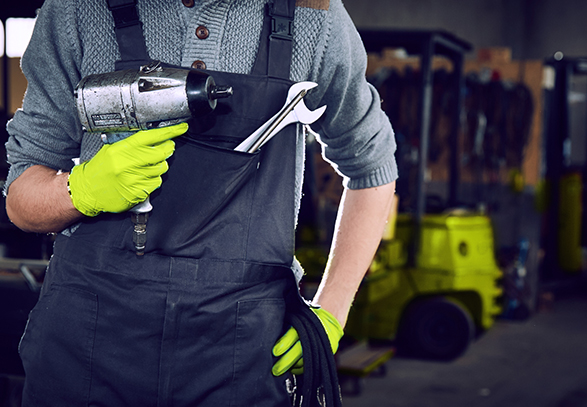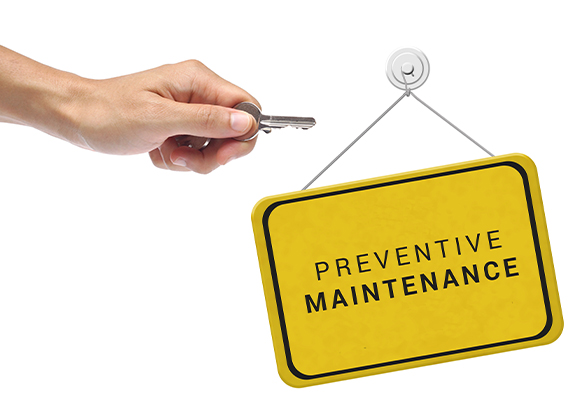Maintenance
Good maintenance is required to make lift trucks safe and Productive. Training, proper tools, manuals and safe maintenance procedures must also be provided for operators or technicians who perform the maintenance.
Pre-shift inspection
Be sure a technician or your operators examine lift trucks before they are placed in service, at the beginning of each work shift. This is an OSHA requirement. They must be certain that no condition exists that might adversely affect the safety of the lift truck, operator or pedestrian. If problems are found, they must be reported and the lift truck should be tagged, “Out of Service” and repaired before being used again. Procedures for specific lift trucks can be found in the operator’s manual.
Since pre-shift inspection is an OSHA requirement, we advise that you be prepared to document the fact that these inspections have been made on a regular basis. Your CLARK dealer can supply pre-shift inspection report forms , which can serve as proof of such inspections.

Planned maintenance
Planned maintenance is required by OSHA and is more comprehensive than the pre-shift inspection. It is not merely a lube job and oil change; it is a complete inspection of the lift truck. All your lift trucks should be on a regular planned maintenance schedule, specific to each model in your fleet. Planned maintenance intervals and procedures are set forth in the service manual for each lift truck. Examples of current Planned Maintenance Inspection forms are below:
These are available from your CLARK dealer.
Trained mechanics
A lift truck is not like a car or truck. Its operating characteristics, parts and maintenance requirements are very different. There are many special safety precautions that must be taken when working on lift trucks. When it comes to equipment repair, CLARK recommends using only trained, qualified technicians. Never allow your operators to repair their lift trucks.
Consider using your local dealer’s technicians for maintenance and repair of your lift trucks. Your dealer has special tools, equipment and facilities for lift truck repair. Dealer service people are trained. They also have support staff and can get technical assistance from manufacturers. If you choose to use your own technicians, discuss technician training with your dealer. Technicians should have manuals and instructions for evaluating and repairing the equipment they work on. Dealers are often able to provide information on programs or technical publications that will benefit your technicians.
Technicians must also be trained in safety maintenance practices such as blocking up machines, using the right tools and wearing protective clothing and equipment.
If your maintenance technicians work on batteries, be sure that they have proper equipment and training. Battery powered equipments have special maintenance requirements. If you have questions or concerns, your dealer can provide a battery specialist to help you.
Safe operation of your equipment can be determined by the quality of your maintenance program, so use only trained technicians and CLARK approved parts that assure proper fit, long life and safe operation. Non-CLARK approved parts may not function properly and could lead to accidents.


